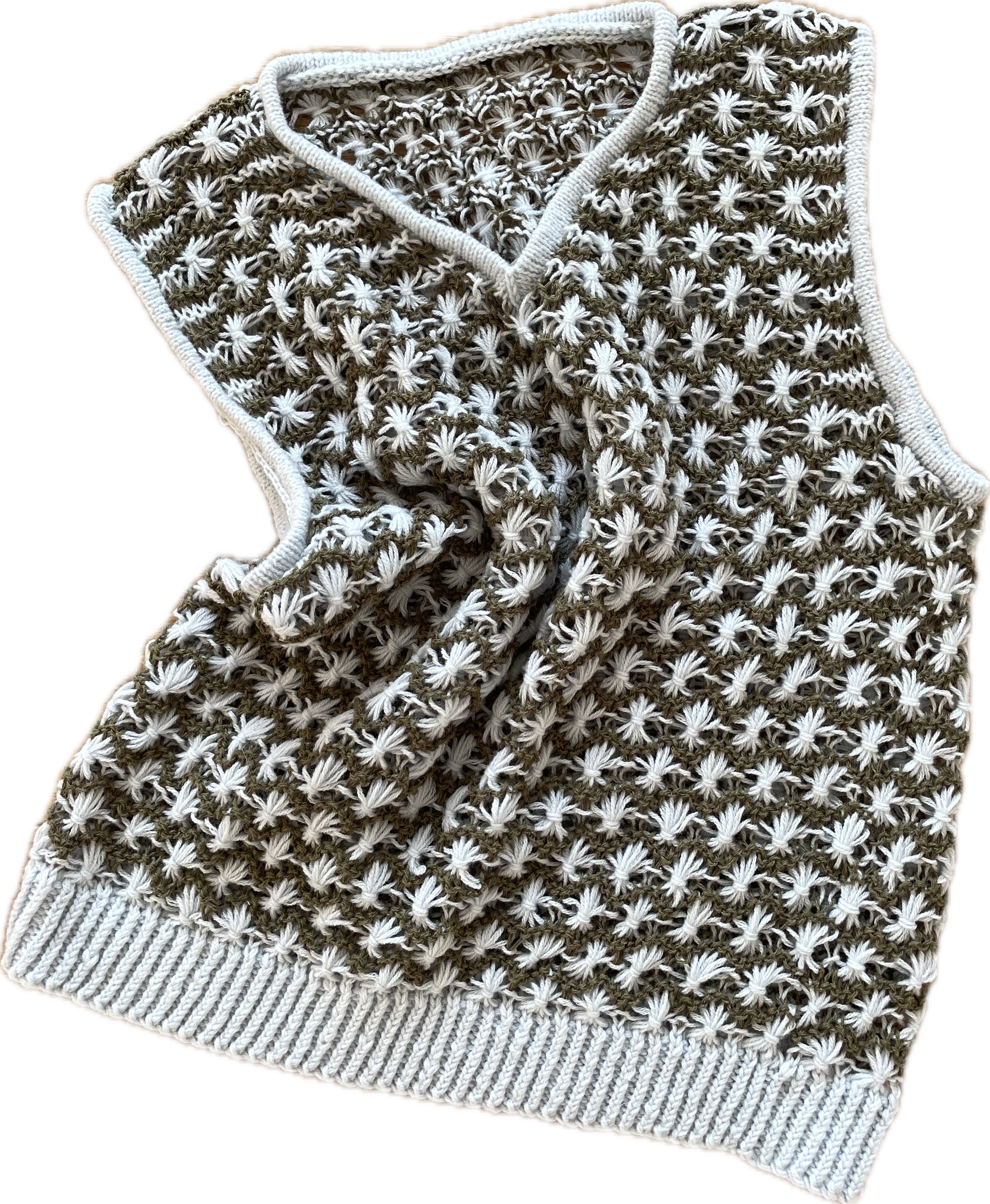Row's Eden top
18.06.2025
I started knitting this top earlier this year in January whilst dreaming about wearing it in the summer. I finished it a few weeks back and never even blocked it because I wanted to wear it so much. It's another beautiful pattern by Alice Hoyle from Row's, and I picked my current favourite color combination to knit with - an olive green and an ice blue, both from the brand Knitting for Olive. The stitch that is used throughout the pattern is called 'Open Daisy stitch', and I think it fits so well.

Eden top